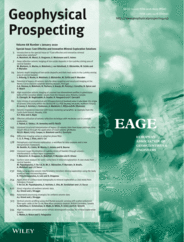-
oa Data mining of petrophysical and lithogeochemical borehole data to elucidate the origin of seismic reflectivity within the Kevitsa Ni–Cu–PGE bearing intrusion, northern Finland
- Source: Geophysical Prospecting, Volume 68, Issue 1 - Cost‐Effective and Innovative Mineral Exploration Solutions, Jan 2020, p. 82 - 102
-
- 30 Apr 2019
- 15 Nov 2019
- 30 Dec 2019
Abstract
The Kevitsa mafic‐ultramafic intrusion, located within the Central Lapland Greenstone Belt in northern Finland, hosts a large, disseminated Ni–Cu–PGE sulphide deposit. A three‐dimensional seismic reflection survey was conducted over the Kevitsa intrusion in 2010 primarily for open‐pit mine planning and for deep mineral exploration purposes. In the Kevitsa three‐dimensional seismic data, laterally continuous reflections are observed within a constrained region within the intrusion. In earlier studies, it has been suggested that this internal reflectivity mainly originates from contacts between the tops and more sulphide‐rich bottoms of smaller scale, internally differentiated magma layers that represent a spectrum of olivine pyroxenites. However, this interpretation is not unequivocally supported by the borehole data. In this study, data mining, namely the Self‐Organizing Map analysis, of extensive Kevitsa borehole data is used to investigate the possible causes for the observed internal reflectivity within the Kevitsa intrusion. Modelling of the effect of mineralization and alteration on the reflectivity properties of Kevitsa rock types, based on average modal compositions of the rock types, is presented to support the results of the Self‐Organizing Map analysis. Based on the results, we suggest that the seismic reflectivity observed within the Kevitsa intrusion can possibly be attributed to alteration, and may also be linked to the presence of sulphide minerals.




